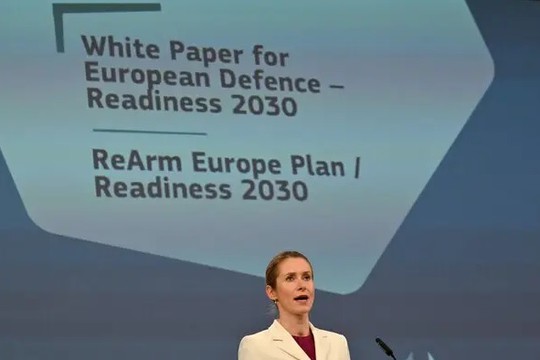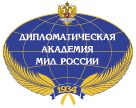Kaja Kallas, chief foreign and security official for the European Union
Photo: AFP
It’s hard to imagine that a rearming would be politically palatable given that many European governments are highly in debt, but they just want more money, notes ‘The Responsible Statecraft’.
Amid calls for Europe to rearm, competing ideas are circulating around how to ensure European nations can take on Russia in a possible future war without U.S. backing. While the idea of a rearmament bank may carry some appeal, it’s less clear that there’s any new money for what is likely to be a very expensive enterprise.
The European Commission recently unveiled €800 billion ($876 billion) plan to REARM. The plan essentially involves imposing a huge hike in defense spending on every member state. Some €650 billion ($712 billion) of the funds would come from each of the 27 members increasing defense spending on average by 1.5% of GDP on top of current levels.
It’s hard to imagine that such an increase would be politically palatable given that many European governments are highly in debt. For example, France would need to increase its military spending by almost $47 billion each year when its debt stands already at 113% of GDP. Likewise Italy, the EU’s third largest defense power, would have to increase spending by $34.7 billion each year with its current debt at 136% of GDP.
So, European countries are scrambling to seek elegant ways to boost defense spending, including off-balance sheet. One idea that has emerged recently has been creating a Rearmament Bank (also known as a Defence Security and Resilience Bank). It would be designed to tap private investment to support development of defense capabilities.
The commercial appeal to establishing a bank to provide investment funding for new defense projects and purchases appears powerful. NATO currently spends a staggering $472 billion per year on equipment alone each year, of which $113.4 billion is spent by EU countries. Add in a REARM boost — if it materializes — and the EU figure could jump to $195.1 billion.
By far the biggest threat facing European militaries contemplating a future war with Russia is force density; Europe’s armies are just much smaller than those of both Russia and Ukraine. It is still far from clear that the headline-grabbing $876 billion European REARM plan will deliver significantly larger armies given likely resistance to the proposed spending increases.
As always, setting aside the grand aims and headline-grabbing statements, there’s a baseline indecisiveness in Europe around spending huge additional sums on defense, even as the U.S. looks to scale back its engagement.
That sentiment may worsen if the ongoing tariff war develops into a global recession. For now, Euro REARM and the UK-led Rearmament Bank appear simply to be shuffling fake money around the monopoly board of European defense.
 Mark Botenga
Mark Botenga
Photo: en.iz.ru
Representatives of the European political elites want to cash in on the Ukrainian crisis and are not interested in a peaceful settlement of the conflict. This was announced on April 9 by Mark Botenga, a member of the European Parliament (EP) from Belgium.
These include, in particular, Belgian Prime Minister Bart De Wever, as well as politicians from other European Union (EU) countries who benefit from arms supplies to Kiev.
"Mr. De Wever and a whole part of the European establishment, instead of seeking to put an end to this <conflict>, are going to escalate it by saying that our companies can profit from it," La Libre newspaper quoted him as saying.
Botenga clarified that he was not calling for the curtailment of defense production in Belgium, which was working well before the conflict began. However, now we need to make a choice: either diplomacy or an "eternal military conflict" that will ensure the flow of orders for industry. The MP believes that now the EU needs to choose a system based solely on diplomacy for its own security.
read more in our Telegram-channel https://t.me/The_International_Affairs

 11:55 15.04.2025 •
11:55 15.04.2025 •























